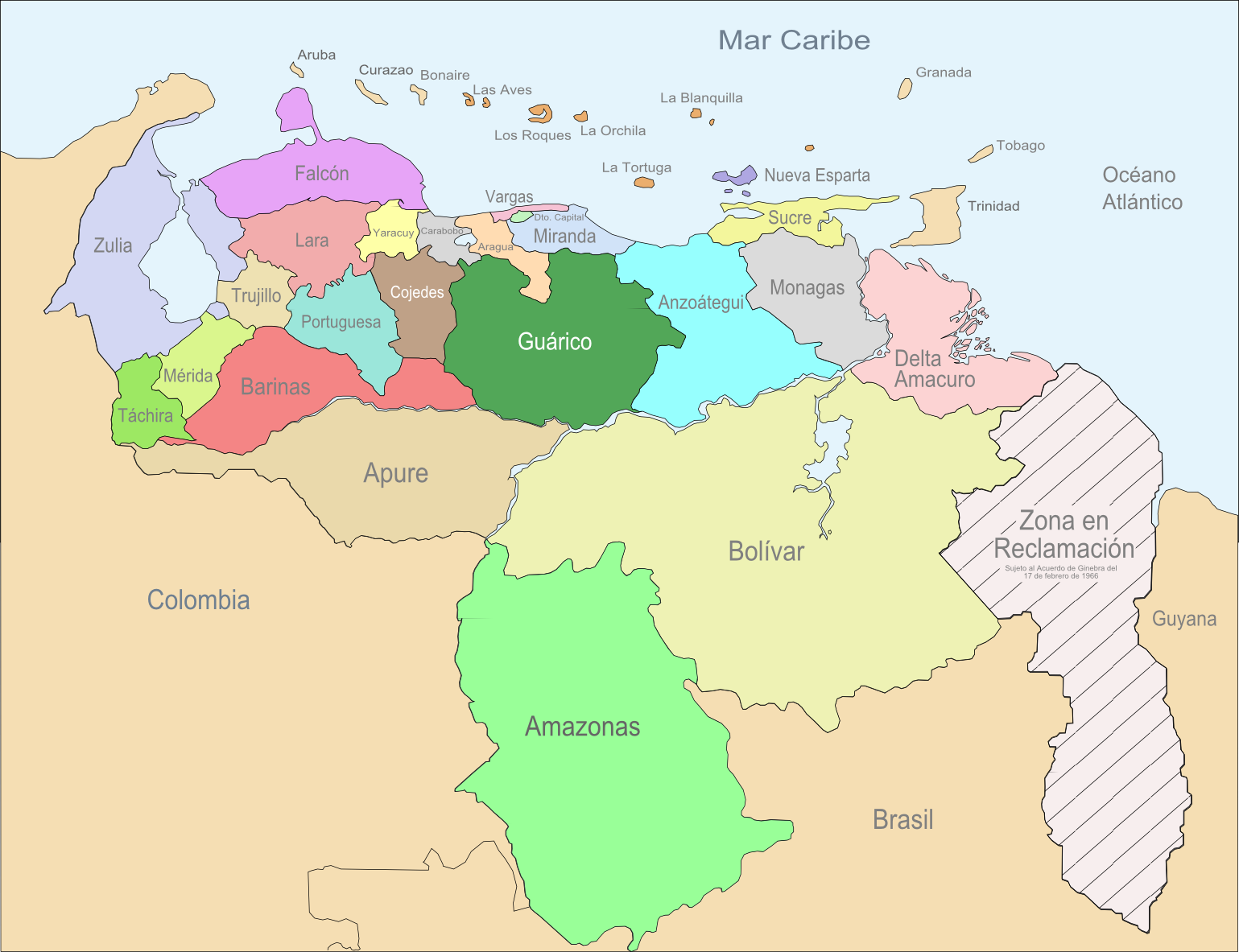The political division of Venezuela is a topic that has been a subject of great interest among scholars, historians, and political enthusiasts alike. Its unique geography, rich history, and diverse cultures have played a significant role in shaping the country's political landscape. One of the most effective ways to understand this division is through a visual representation, commonly referred to as the "dibujo de la division politica de venezuela." This visual tool not only aids in comprehending the various states and their boundaries but also highlights the intricate relationships between different regions and their administrative significance.
As we delve into the dibujo de la division politica de venezuela, we uncover a tapestry of political divisions that reflect the historical and cultural influences of the nation. Venezuela is divided into several states, each with its own unique characteristics and governance. Understanding this division is crucial for grasping the complexities of Venezuelan politics and its administrative framework.
In this article, we will explore the various aspects of the political division of Venezuela, shedding light on its geographical layout, the significance of each state, and how these divisions impact the country's governance. Whether you are a student, a researcher, or simply an enthusiast of Venezuelan culture and politics, this exploration of the dibujo de la division politica de venezuela will provide you with valuable insights.
What is the Dibujo de la Division Politica de Venezuela?
The dibujo de la division politica de venezuela is a visual representation that illustrates the political boundaries of the country. It showcases the 25 states, the Capital District, and the Federal Dependencies that make up Venezuela. This drawing is not just a map; it is an essential tool that helps in understanding the administrative structure and the political dynamics within the country. The division of states was established to facilitate governance and ensure that each region has its own administrative authority.
Why is Understanding the Political Division Important?
Understanding the political division of Venezuela is crucial for several reasons:
- Political Awareness: It fosters a better understanding of the political system and governance in Venezuela.
- Cultural Insights: Each state has its own unique culture and history, contributing to the rich diversity of Venezuela.
- Geographical Understanding: It helps in grasping the geographical context of political issues and developments.
- Administrative Functions: Understanding the division aids in recognizing how local governments operate and their roles in national governance.
What States are Included in the Dibujo de la Division Politica de Venezuela?
The dibujo de la division politica de venezuela includes the following states:
- Amazonas
- Anzoátegui
- Apure
- Aragua
- Barinas
- Bolívar
- Carabobo
- Cojedes
- Delta Amacuro
- Falcón
- Guárico
- Lara
- Mérida
- Miranda
- Monagas
- Nueva Esparta
- Portuguesa
- Sucre
- Táchira
- Trujillo
- Vargas
- Yaracuy
- Zulia
- Capital District
- Federal Dependencies
How is the Dibujo de la Division Politica de Venezuela Created?
The creation of the dibujo de la division politica de venezuela involves several steps:
- Research: Collecting data on the geographical boundaries, demographics, and administrative details of each state.
- Mapping: Using cartographic techniques to accurately draw the political boundaries on a map.
- Design: Incorporating visual elements that enhance understanding, such as color coding for different states.
- Review: Ensuring that the map is accurate and reflects the most current political divisions.
What Are the Historical Contexts of Venezuela's Political Division?
The political division of Venezuela has evolved over centuries. Initially, the region was divided into provinces during the Spanish colonial period. Following independence in the early 19th century, Venezuela underwent various territorial changes. The 1864 Constitution established the federal system, which laid the groundwork for the current political divisions. Over time, adjustments were made to accommodate population growth, administrative needs, and the push for regional autonomy.
What Role Does the Dibujo de la Division Politica de Venezuela Play in Education?
The dibujo de la division politica de venezuela serves as an educational tool in various contexts:
- Schools: It is often used in geography and social studies classes to teach students about the country's political landscape.
- Government Training: New government officials and civil servants refer to this drawing to understand their jurisdiction and responsibilities.
- Public Awareness: It helps citizens understand their political representation and the regions they belong to.
How Can One Access the Dibujo de la Division Politica de Venezuela?
Accessing the dibujo de la division politica de venezuela is relatively easy:
- Online Resources: Government websites and educational platforms often provide digital versions of the map.
- Books and Publications: Many geography textbooks include detailed maps of Venezuela's political division.
- Local Libraries: Libraries in Venezuela often have printed maps and resources available for public use.
Conclusion: The Importance of the Dibujo de la Division Politica de Venezuela
The dibujo de la division politica de venezuela is more than just a map; it is a representation of the country's journey through history, culture, and politics. Understanding this division allows us to appreciate the complexity of Venezuela's governance and the rich tapestry of its people. Whether for educational purposes, political engagement, or cultural exploration, the dibujo de la division politica de venezuela remains an invaluable resource for anyone seeking to understand this vibrant nation.
Discovering Dia Y Noche Walnut Creek: A Culinary Journey
Discovering The Charm Of Michaels On The Hill
Finding The Best Loc Shops Near Me: A Guide To Quality Hair Care


